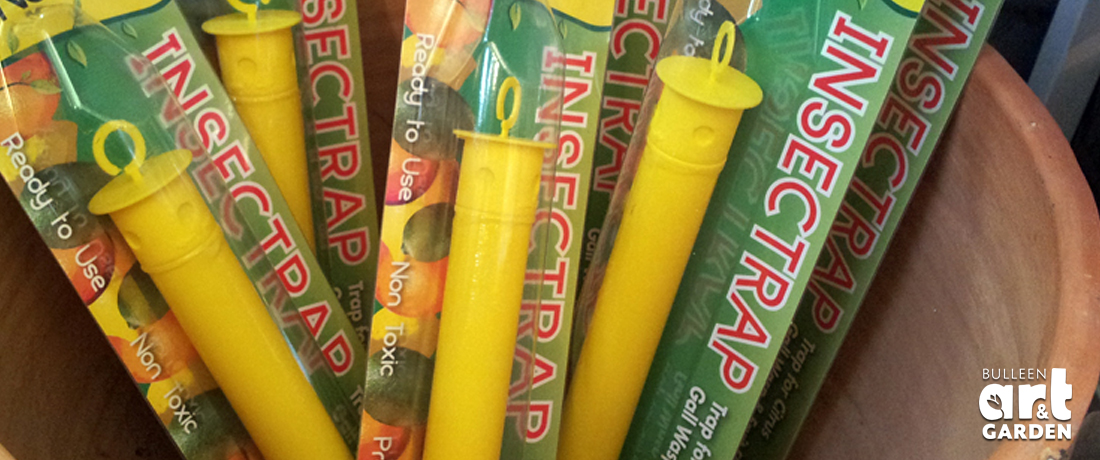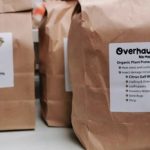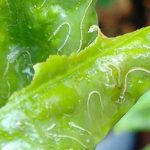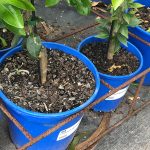
Citrus gall wasps (Bruchophagus fellis) are small (3mm) shiny black wasps native to northern Australia. There they have natural predators (two parasites) which keep the number of gall wasps under control. As the wasps have gradually moved south (thought to be via the movement of infected citrus trees), they have appeared in many areas without their natural predators, and consequently have exploded in numbers and caused considerable damage.

The wasps have a preference for the native limes, as well as lemons, oranges and grapefruits. Mandarins are less affected, and cumquats are unaffected as whilst within the citrus genus, they are more distantly related to the other citrus (and were once classified in their own genus – Fortunella). Adult wasps emerge in spring, often timing emergence with the onset of a flush of new growth. The wasps have a limited flying range, so, unless they are moved by the wind, they tend to re-infest the trees they emerged from. After mating, the female immediately lays her eggs into the soft new season flush. Eggs hatch after 2 – 4 weeks and the young larvae burrow into the soft bark. Distinctive woody galls form around the larvae, becoming visible in summer and gradually enlarging over autumn and winter. The new generation emerges the following spring, completing the year-long life cycle. Adult wasps live for only one week after emergence. The galls can weaken the trees, eventually making them unproductive, reducing crop yield and causing dieback.
Control
This has been difficult in Melbourne as, at this stage, predator release is not possible (as happens in Queensland). However, recent new product development has given hope to gardeners in southern Australia. A new product based entirely on calcined Kaolin clay (Overhaul), and organically rated, has been found to dramatically reduce the size and number of galls.
Best practice includes:
- Reduce the amount of soft spring flush growth by pruning (and gall removal) and fertilising in late summer or autumn instead of late winter and spring .Use a balanced fertiliser rather than a highly nitrogenous one.
- Spraying with Overhaul (a kaolin clay product) in spring and summer
- Placing sticky traps (see below) into the trees around spring to catch emerging wasps and prevent them mating and laying eggs into the new growth. Adult wasps don’t fly far. They can be moved good distances by wind, but will tend to re-infect the tree they emerged from. Hence traps are useful to prevent re-infection.
- Remove galls before spring, wrap and place in your rubbish bin (NOT your greenwaste bin).
- Where possible, get neighbours involved and protecting their trees as well.

Protect the bees, birds and butterflies from your sticky trap.
Physical traps are one of the few tools that we have to help prevent the infestation of our citrus trees by the citrus gall wasp. Unfortunately, these traps are non-selective and can also catch other species including bees, butterflies and even birds. The level of bycatch can be reduced through the use of a physical barrier that will still allow the citrus gall wasp through but not species larger than the size of the holes in the mesh.
Below is a basic barrier anyone can build that requires minimal equipment and materials.

Materials you need
|
Tools you need
|
Step 1
Drill 6 holes in each of the lids.

Step 2
Cut the mesh so that the width is just larger than the circumference of the jar lids and about 25mm taller than the height of the gall wasp trap.
Step 3
Roll the mesh into a tube.
Step 4
Slip the tube into the inside edge of the jar lids and use 4 cable ties to hold in place. This is the bottom of your barrier cage. The middle 2 holes will help with drainage.

Step 5
Use a cable tie to hold the two long edges together forming a secure tube.

Step 6
Loop a cable tie through the 2 centre holes in the top of the top jar lid and attach the metal hook to the outside and the plastic hook on the top of the gall wasp trap on the inside. Tighten the cable tie so they don’t fall off.

Step 7
Twist open the pheromone lure in the yellow sticky trap.
Step 8
Place the trap inside the cage and using the 4 holes and cable ties, secure the top lid to the mesh cage.
Step 9
Cut off the excess length from the cable ties.
Step 10
Hang the bycatch barrier and trap in your citrus tree.






